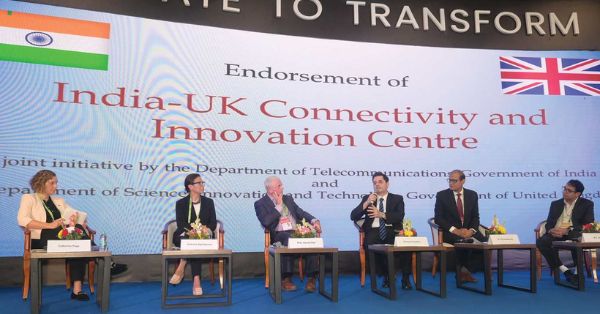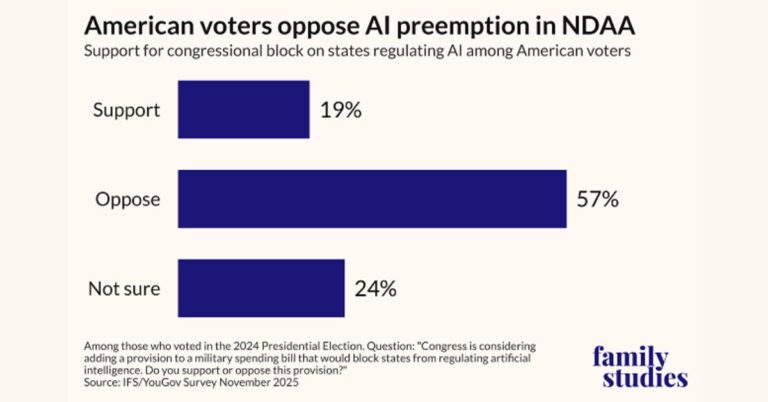India–UK joint telecom innovation centre announced
India and the United Kingdom have launched the India–UK Connectivity and Innovation Centre to accelerate secure, AI-driven, and resilient telecom technologies over the next four years.
Funding and scope: £24m/₹282cr for AI, NTNs and security
The two governments committed an initial £24 million—roughly ₹250–₹282 crore depending on exchange rates—to fund applied research, joint testbeds, field trials, and standards contributions in emerging telecom domains. The investment concentrates on three pillars: AI in telecommunications, non-terrestrial networks (NTNs) for satellite and airborne connectivity, and telecoms cybersecurity with open, interoperable systems. The multi-year window aligns to the critical runway for 5G-Advanced and early 6G experimentation.
Governance: UKRI–DoT delivery under Tech Security Initiative
The centre will be implemented under the UK–India Technology Security Initiative and jointly delivered by UK Research and Innovation (UKRI) and India’s Department of Telecommunications (DoT). It is positioned as a flagship of the UK–India Research and Innovation Corridor, linking university research to lab validation and market pilots, with industry partners expected to co-develop and commercialize outputs.
Alignment with Bharat 6G Alliance and UK supply chain diversification
The move supports India’s 6G vision and Bharat 6G Alliance objectives and dovetails with the UK’s push for diversified, secure telecom supply chains, complementing efforts such as Open RAN evaluations and operator diversification initiatives. It also reinforces the India–UK 2035 Vision to deepen collaboration in secure digital infrastructure and trusted technology.
Why it matters for 5G-Advanced, 6G and enterprise networks
The timing intersects with 5G-Advanced deployments, early 6G research, and a geopolitical drive for resilient, diversified networks.
Shaping 3GPP/ETSI standards for 5G-Advanced and 6G
With ITU’s IMT‑2030 6G framework set and 3GPP Release 18 introducing 5G‑Advanced, countries are racing to shape requirements, IPR, and reference implementations. A joint India–UK centre increases both nations’ influence in standards bodies such as 3GPP and ETSI, enabling them to push requirements for spectrum efficiency, sensing, NTN integration, and energy-aware network design.
AI-native operations: zero-touch RAN, core and assurance
Traffic growth, energy constraints, and complex multi-vendor architectures are making human-in-the-loop operations unsustainable. AI-native RAN and core functions, zero‑touch service management, and AI-driven assurance will move from pilot to production in the next two to three years. Shared testbeds can de-risk deployment for operators while addressing explainability, safety, and compliance for AI models.
Non-terrestrial networks for coverage and resilience
Non-terrestrial networks—LEO/MEO satellites and high-altitude platforms—are maturing with 3GPP NTN specifications for NR and IoT. Combining terrestrial 5G with satellite backhaul or direct-to-device links can close rural gaps, harden critical infrastructure, and enable mobility use cases across maritime, aviation, and logistics.
Security frameworks for Open RAN and cloud-native cores
As operators adopt cloud-native cores, Open RAN, and edge computing, the attack surface grows. A bilateral focus on security, interoperability, and supply-chain validation can accelerate frameworks spanning 3GPP SA3 security work, GSMA NESAS/SCAS assessments, and O‑RAN Alliance security profiles—all essential for enterprise-grade private 5G and national networks.
Focus pillars: AI, NTNs and telecom cybersecurity
The programme translates policy into tangible assets—reference architectures, testbeds, and trials that can scale to production.
AI for RAN energy savings, prediction and closed-loop automation
Expect emphasis on AI for RAN energy savings, traffic prediction, anomaly detection, and closed-loop optimization across multi-vendor environments. Priorities include safe MLOps for telecom, standardized data pipelines, and cross-domain insights that span RAN, transport, core, and edge. Outputs could include reference models and toolchains that integrate with existing orchestration stacks and align to ETSI ENI and TM Forum frameworks.
NTN trials: LEO backhaul, hybrid routing and device interop
Work will likely target LEO-enabled backhaul for rural sites, hybrid terrestrial–satellite routing, NTN device interoperability, and QoS management for enterprise and mission-critical services. Trials can validate 3GPP NTN support in Release 17/18 handsets and modules, plus techniques for dual connectivity and mobility across satellite and ground cells. India’s strong satellite footprint and the UK’s research base in radio and antenna systems are complementary levers.
Telecom cybersecurity, interoperability and certification
The centre is set to develop repeatable evaluation methods for cloud-native cores, Open RAN components, and API security across multi-domain networks. Areas to watch: SBOM-driven assurance, cryptography for NTN links, secure boot and attestation for disaggregated RAN, and identity frameworks for device-to-cloud. Alignment with O‑RAN Alliance conformance, ETSI NFV/MEC security, and national guidance from bodies like NCSC can shorten certification cycles.
Who should participate and how to engage
The initiative opens practical routes for operators, vendors, hyperscalers, and enterprises to co-create market-ready solutions.
Operators and hyperscalers: testbeds, data pipelines and CI/CD
Telecom operators in India and the UK can use joint testbeds to validate Open RAN blueprints, AI‑assisted assurance, and satellite backhaul under real traffic patterns. Cloud providers and edge platforms can co-develop data pipelines, model hosting, and secure CI/CD for telco workloads, with joint IP or reference designs aimed at private and public networks.
Vendors and startups: interop, standards and security pathways
Network software vendors, silicon providers, and device makers can target interop testing, standards contributions, and security certification pathways. Startups in RIC/xApps/rApps, NTN payloads, RF front-ends, or security analytics can leverage shared labs and university partnerships for faster pilots and access to both markets.
Enterprises and public sector: private 5G pilots and ROI
Manufacturers, logistics, utilities, healthcare, and smart cities can shape pilots for private 5G with satellite failover, assured slicing, and latency-sensitive edge workloads. Early adopters will gain validated blueprints, clearer ROI, and procurement-ready architectures that map to regulatory and security baselines.
What’s next: labs, pilots, standards and spectrum
Success will hinge on concrete milestones, standards impact, and commercialization beyond the lab.
Near-term deliverables: labs, partners and pilot sites
Look for announcements of joint labs, initial partners, and pilot sites across rural coverage, industrial campuses, and transport corridors. A pipeline of AI-in-network proofs of concept, Open RAN security evaluations, and hybrid NTN backhaul trials would indicate traction.
Standards and spectrum priorities
Track contributions into 3GPP Release 19 and ITU IMT‑2030 use cases, plus inputs to O‑RAN Alliance working groups. On spectrum, watch national positions on mid-band refarming, NTN allocations, and power limits that affect device ecosystem timelines.
Success metrics: IP, certifications and deployments
Key indicators include cross-border IP creation, number of components passing security/interoperability certification, field trial-to-deployment conversion, and enterprise references that show measurable gains in uptime, coverage, and energy efficiency.
Analyst view: upside, risks and execution priorities
The centre addresses real industry gaps—operations automation, rural reach, and security in open, cloud-native networks—while boosting India–UK influence in 6G shaping.
Opportunities and risks: governance, export controls and adoption
Done well, it can shorten time-to-market for AI-native telco functions, validate NTN economics for rural and mission-critical use, and lower risk for Open RAN deployments. Execution risks include cross-border IP governance, export controls, aligning assurance frameworks, and integrating research outputs into operator-grade tooling. Clear governance, open reference designs, and early operator–enterprise pilots will be the difference between a good research program and market-shaping outcomes.
Bottom line: the ₹250–₹282 crore India–UK bet is small relative to national capex, but it targets leverage—standards influence, testbed-to-deployment velocity, and trust in open, AI-driven, hybrid terrestrial–satellite networks that enterprises and operators need now.








































